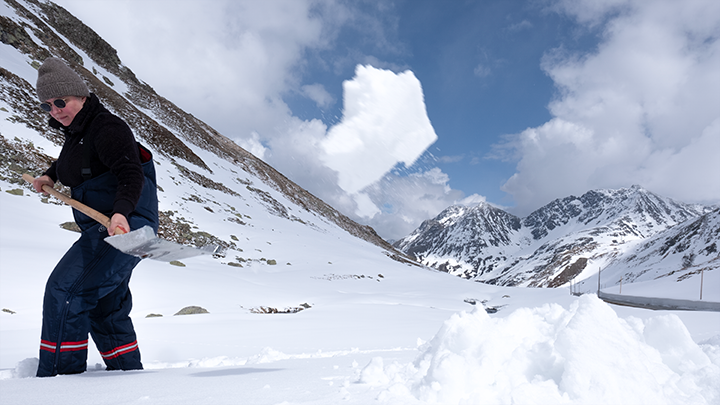The questionnaire series thinking about / working on features projects and processes of students and teaching staff, asking them to share thoughts on their current topics and give insight into their practice. The questions vary slightly and can be adapted by the interviewee. The questionnaire series is edited by Karin Lingnau. If you are interested to take part feel free to contact me.
*
In this edition Anna Comiotto (postgraduate at the KHM since 2019) talks about magnetic sand on the Rhein beach, hot sparks, radio waves, mineral findings, snow, clouds and her recently started search for an iron meteorite.
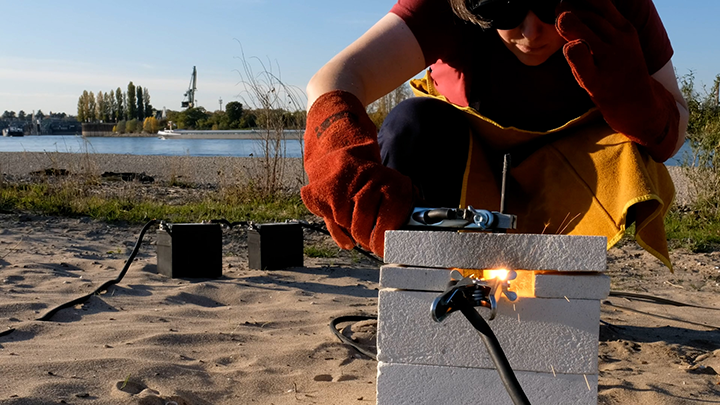
* What is the current focus of your work?
On the beach of the Rhine, while watching passing ships, I collect magnetic sand. I mix this sediment with other materials I find there: with quartz sand and charcoal from a fire pit. On site I make what I have found react by setting it in sparks at a surprisingly high heat. After cooling, I find a newly formed, metallic shiny material.

To be honest, I am only beginning to understand what is happening here. I connect the most beautiful of the created structures to a thirteen-meter-long wire carried by a balloon as a flying antenna. Then I attach a coil, a needle, and my headphones. As evening falls, I start to hear crackling sounds when I touch the lump with the needle. When I touch it at certain points, it surprises me: it becomes active in a different way. I notice strange signals coming from the headphones: one sound fades in and out just as a freighter appears and passes by. I hear small bits of music, but mostly voices. In this way, I am exploring electrical phenomena that arise from found and transformed things.
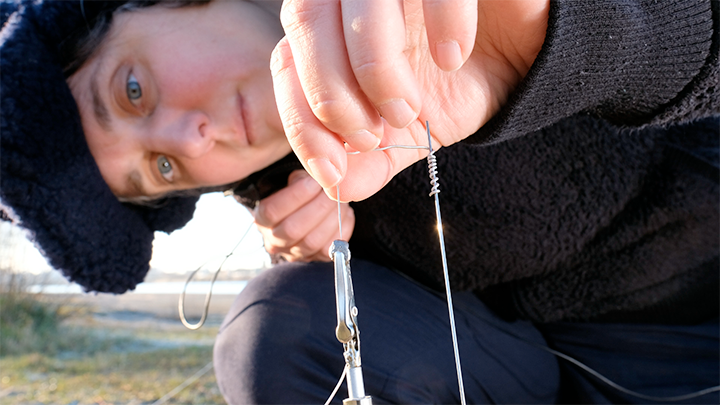
*What kind of materials are important to you right now and how is this expressed in your work?
On the beach of the Rhine, I search for magnetic sand and charcoal – and in the mountains for semiconductive minerals. Recently, a find resulted in the installation Rauschen. It was inspired by the historical practice of using pyrite as an unpowered radio receiver. I discovered pyrite in a riverbed near where I live. I split black schist and found the mineral inside.
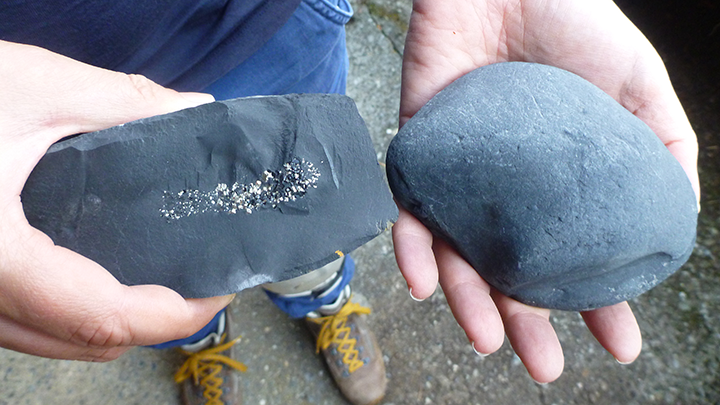
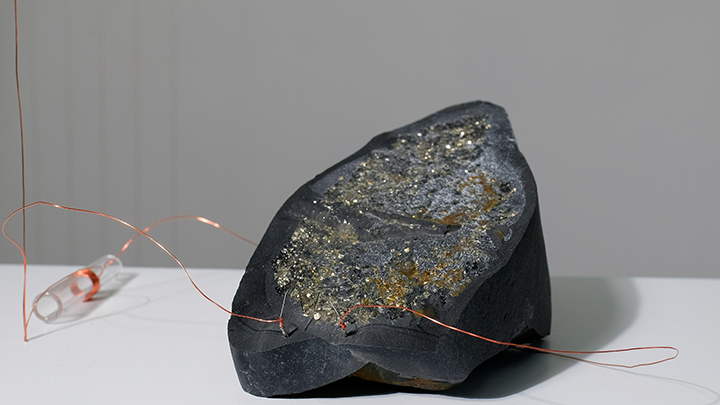
When needles touch the pyrite at the right spot, shortwaves are received and can be heard as noise at the open end of a resonance cabinet. It is the sound of the river where I found the stones, but sounds more like a hybrid between artificial and natural phenomenon.
Another material that is important to me right now comes from a very different place. I recently started digging for iron meteorites. On the mountain where I’m looking for them with a friend, cosmic iron fell from the sky about 160,000 years ago.
* What is challenging your practice right now?
Muscles. On my search for a meteorite, I recently dug my 126th hole in the ground. How many more there will be, pardon the wordplay, is written in the stars. So far, I have found terrestrial things: In a forest, hidden among tree roots 30 cm below ground, I uncovered a marching lyre. Presumably it was lost by a musician who had attached a sheet of music to their brass instrument. Recently I also found a cowbell, a bolt, a metal sheet, a can, barbed wire, horseshoe nails, empty rifle cartridges, a clothing button – and lastly a mysterious conical object.
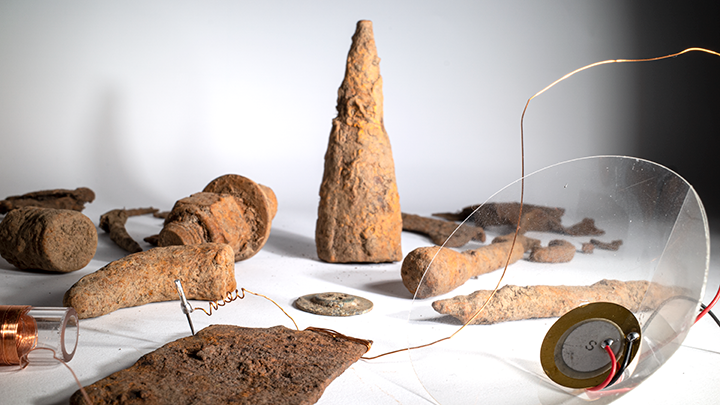

* What would you like to find out right now?
These days I am experimenting with whether my excavated finds, which had nearly disappeared underground, can become active again. And indeed, in the evening at sunset, as soon as the ionosphere reflects particularly well, I listen to the radio with one or the other piece. To do this, I remove the layer of soil from a small spot and expose the metal there. It doesn’t really take much more than that: a long antenna wire stretched out into the open; a coil; and a piece of graphite sharpened so that it only touches the metal surface at a localized point. If I ever do really dig up a meteorite, I will try to use it in a similar way to receive radio waves. The planet Jupiter, or more precisely the moons orbiting it, transmit shortwave at 20 Mhz.
*Is there an overall theme you are exploring?
I am exploring transitions: between the geosphere and the technosphere, between the terrestrial and the extraterrestrial, between natural and handmade things. Most of my work has to do with transformation. About two months ago, I had an unexpected moment that in this sense was a kind of magic. I was in a Swiss mountain area, the Flüela Pass, at 2,383 meters above sea level. I was collecting snow for another project. For a brief moment, as I used all my strength to heave snow into the air with my shovel, the snow I was throwing became a cloud.
